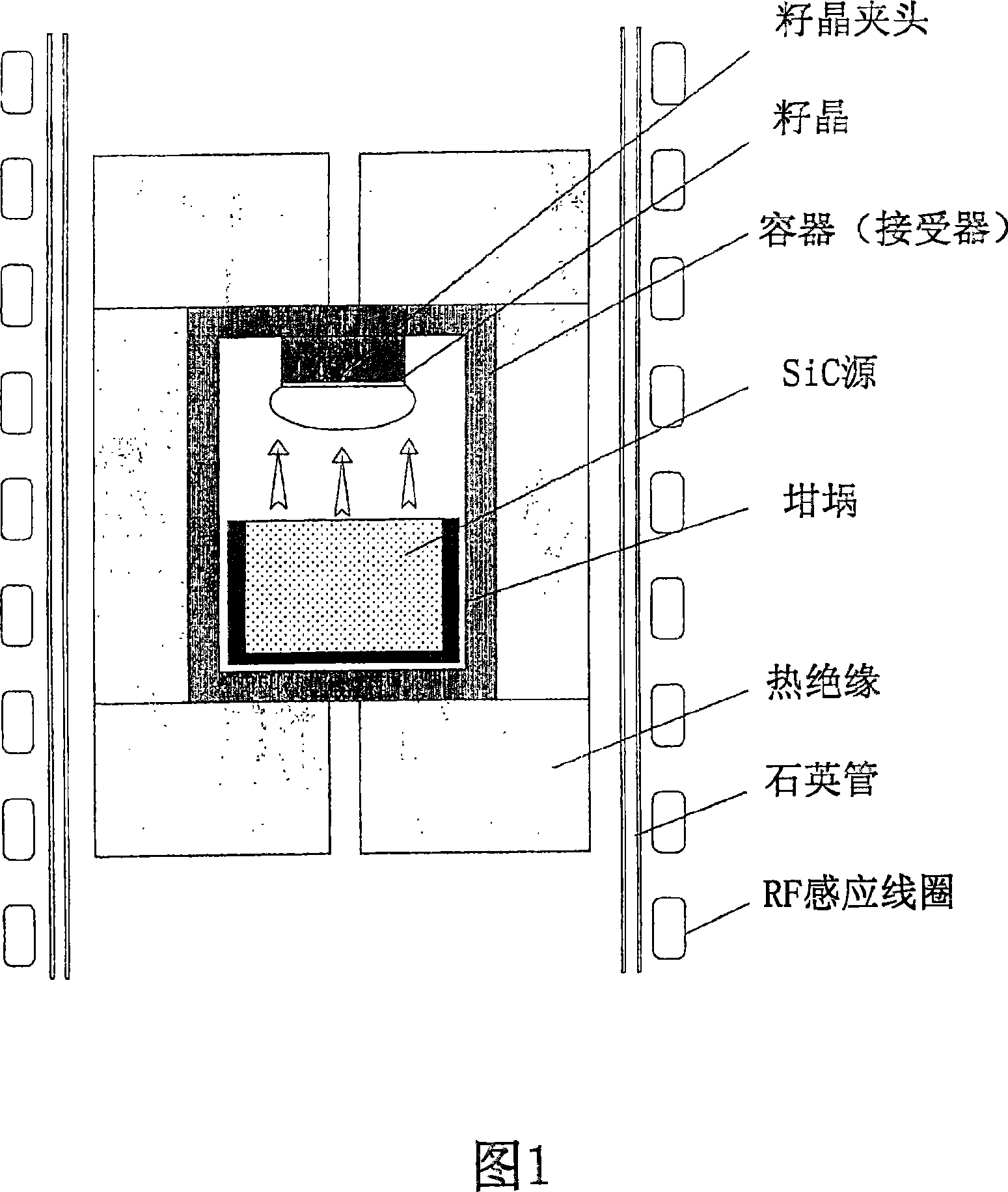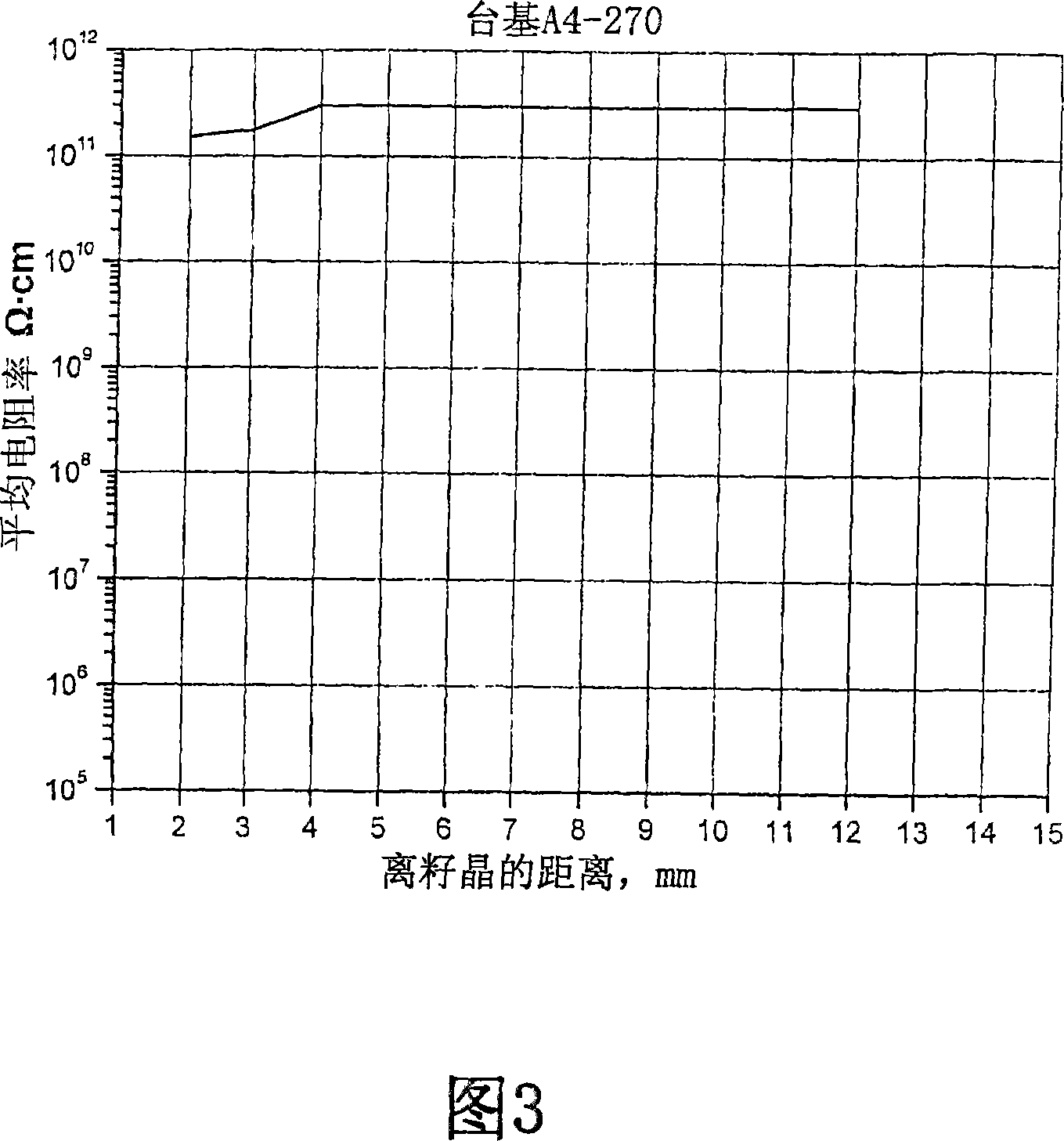Low-doped semi-insulating SIC crystals and method
A crystal and dopant technology, applied in the field of semi-insulating SiC materials, can solve the problems of expensive, unclear influence of semi-insulating properties, high production cost, etc.
- Summary
- Abstract
- Description
- Claims
- Application Information
AI Technical Summary
Problems solved by technology
Method used
Image
Examples
example
[0042] According to the present invention, vanadium-doped semi-insulating single crystal 6H SiC with high resistivity, low capacitance and high thermal conductivity is fabricated using physical vapor transport (PVT) growth technique. A schematic diagram of the PVT growth assembly is given in Figure 1. The growth vessel and other parts of the hot zone are made of dense graphite and purified using well-described industrial procedures to reduce the boron content, preferably below 0.05 ppm by weight. The impurity content generally in low boron graphite is shown in Table 1.
[0043] Table 1 Graphite purity used for SiC crystal growth, GDMS, wppm.
[0044] B
Na
Al
Si
S
Cl
Ti
V
Fe
Ni
0.03
<0.01
<0.05
0.16
0.66
<0.05
<0.01
<0.005
<0.01
<0.01
[0045] High purity polycrystalline SiC is synthesized in a separate process and used as a source in the PVT growth process. Metallic impuri...
example 1
[0054] A 2 inch diameter vanadium-doped semi-insulating SiC crystal (boule A4-261) was grown at a seed temperature of 2050°C and a source temperature of 2100°C. The growth environment was 10 Torr helium. The obtained crystals showed that at 10 11 Very high and uniform resistivity above ohm-cm, as shown in Figure 2, with a standard deviation of about 3.5% over the substrate area. Substrate capacitance measured by mercury probe at 10kHz at 0.2 pF / mm 2 the following.
[0055] The impurity content of crystal A4-261 was analyzed by secondary ion mass spectrometry (SIMS). The results are shown in Table 3.
[0056] Table 3 Impurity content in SI SiC crystal A4-261, cm -3
[0057]
B
N
V
Al
Ti
2.3·10 16
4.9·10 16
6.0·10 16
3.0·10 14
4.0·10 14
[0058] The vanadium content is close to an order of magnitude lower than its solubility in SiC, but at the same time is...
example 2
[0061] The 2 inch diameter dopant Semi-insulating SiC crystals of vanadium (Mesa A1-367).
[0062] The impurity content of mesa A4-367 has been analyzed by SIMS and the results are shown in Table 4.
[0063] Table 4 Impurity content in SI SiC crystal A1-367, cm -3
[0064] B
N
V
Al
Ti
4.3·10 16
9·10 15
5.3·10 16
3.0·10 14
2.0·10 14
[0065] SIMS data show that the nitrogen content is reduced to a level below the boron content. It can also be seen that, similar to Example 1, the vanadium content is substantially below its solubility and sufficiently high above the net shallow impurity concentration (boron minus nitrogen) to obtain semi-insulating properties, as described below.
[0066] Sufficient vanadium doping in combination with relatively low-level nitrogen leads to very high crystal resistivity. In fact, the resistivity is higher than the upper sensitivity limit of ...
PUM
 Login to View More
Login to View More Abstract
Description
Claims
Application Information
 Login to View More
Login to View More - R&D
- Intellectual Property
- Life Sciences
- Materials
- Tech Scout
- Unparalleled Data Quality
- Higher Quality Content
- 60% Fewer Hallucinations
Browse by: Latest US Patents, China's latest patents, Technical Efficacy Thesaurus, Application Domain, Technology Topic, Popular Technical Reports.
© 2025 PatSnap. All rights reserved.Legal|Privacy policy|Modern Slavery Act Transparency Statement|Sitemap|About US| Contact US: help@patsnap.com



